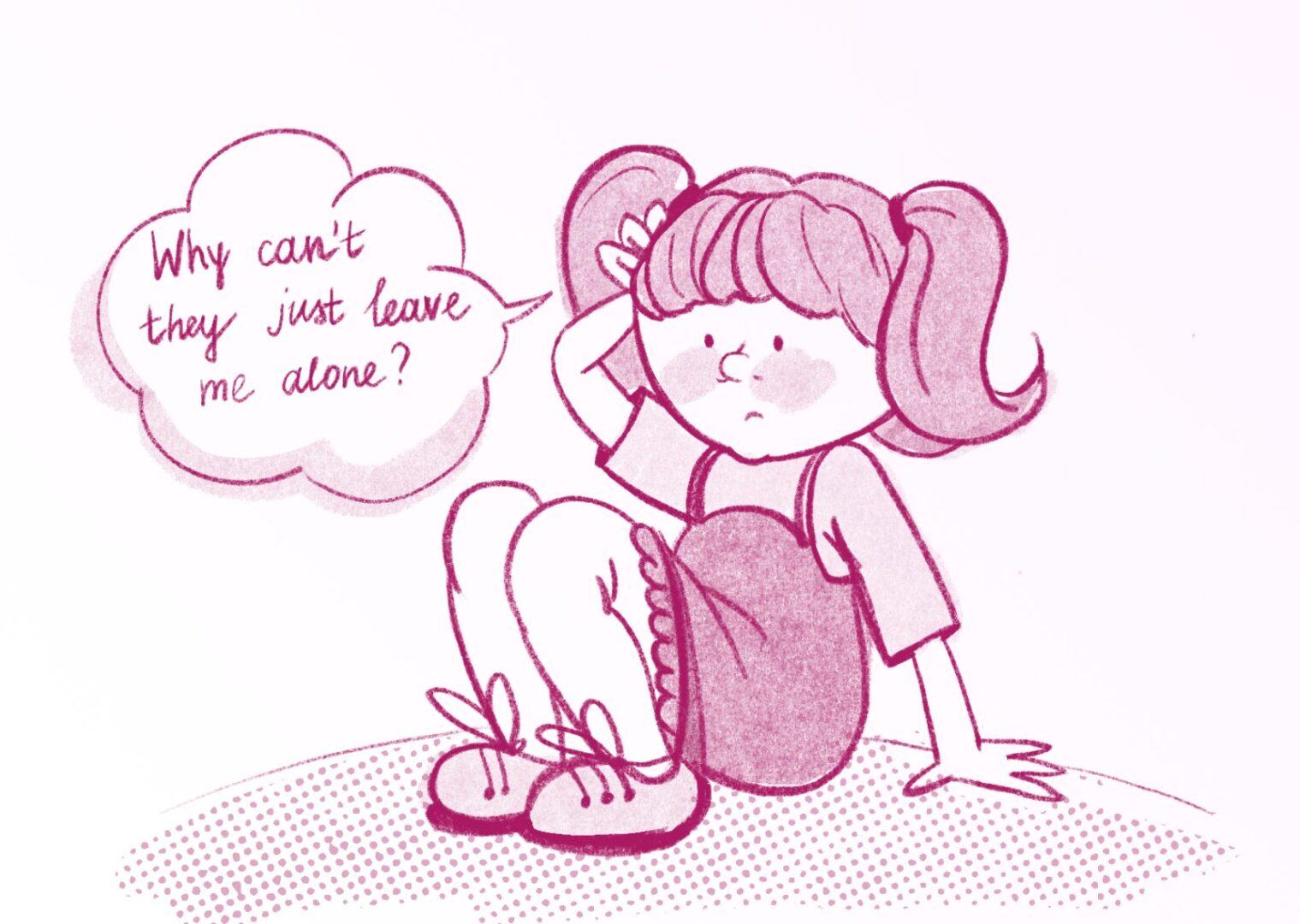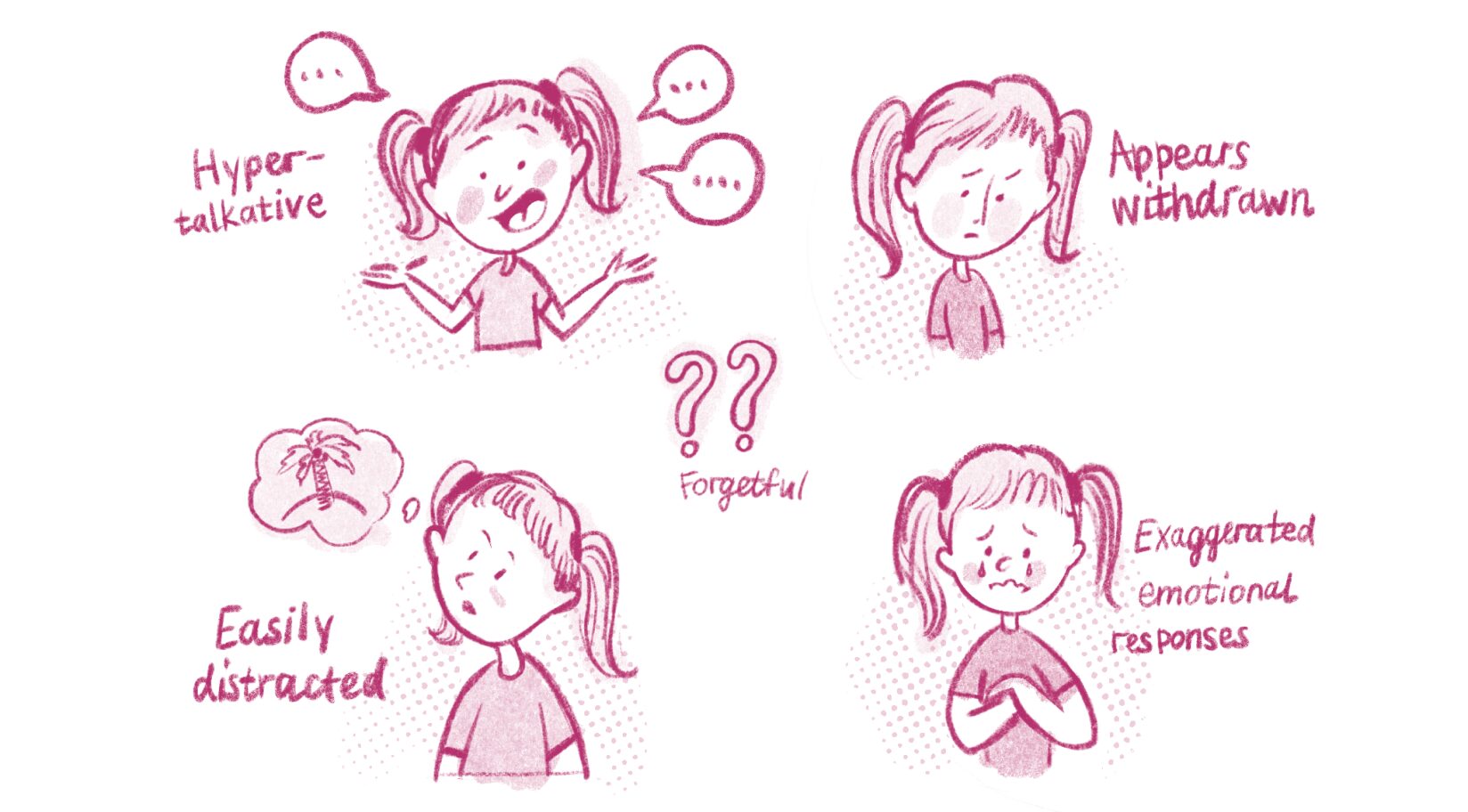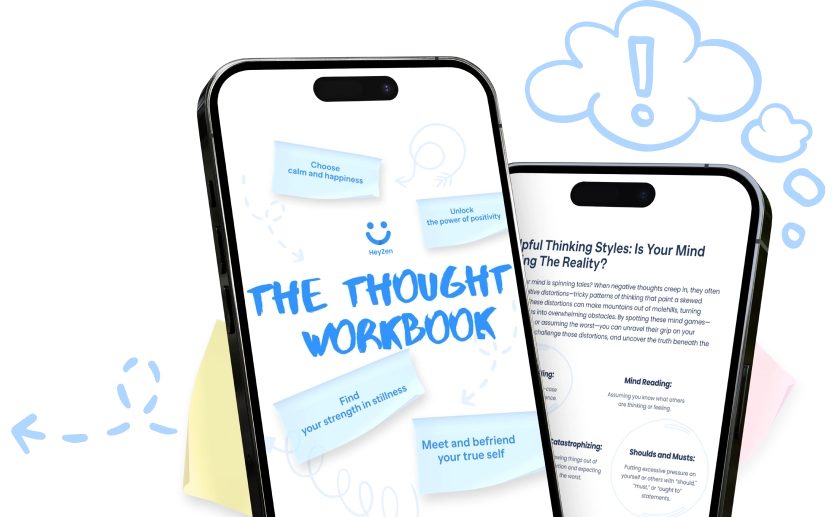ADHD in Girls: the Hidden Diagnosis

The research on the girls’ ADHD hadn’t started until recently, in 1979. Why? Because ADHD in females is often revealed differently: it’s not a restless child running around a classroom, but a shy girl who keeps everything to herself and has her mind wandering around somewhere else, even when it’s time to focus.
Let’s learn about ADHD symptoms in girls, how to treat them, and what other mental health conditions can come along with the disorder.
Key takeaways
- ADHD is a neurodevelopmental disorder influenced by genetic factors, characterized by difficulties with attention, focus, and executive functions. In girls, ADHD often presents differently than in boys, with symptoms such as daydreaming and inattentiveness rather than hyperactivity. This difference can lead to underdiagnosis.
- Diagnosing ADHD in girls can be difficult because they may not exhibit traditional hyperactive behaviors. Careful observation and documentation of symptoms, as well as family history, are important steps before consulting a specialist.
- ADHD is categorized into three types – Inattentive, Hyperactive-Impulsive, and Combined – each with specific symptoms.
- Undiagnosed or late-diagnosed ADHD in men and women equally can lead to mental health issues such as depression, anxiety, risky behaviors, and low self-esteem.
- ADHD in girls can be managed with medication, cognitive-behavioral therapy (CBT), and educational support. Stimulant and non-stimulant medications are commonly used, and therapy focuses on teaching coping strategies.
- For younger children, non-medication strategies like CBT, parent training, and physical exercise are recommended to help manage symptoms.
- With proper diagnosis and support, girls with ADHD can lead normal, fulfilling lives by developing effective coping strategies and managing their symptoms.
What is Attention Deficit Hyperactivity Disorder (ADHD)?
ADHD can be caused by a complex of genetic factors, and some of them remain unknown. However, in simple terms, it’s a congenital neuro-developmental disorder, which means people are born with it.
ADHD can be caused by a complex of genetic factors, and some of them remain unknown. However, in simple terms, it’s a congenital neuro-developmental disorder, which means people are born with it. ADHD brains have abnormal functioning of neurotransmitters, the brain messengers that tell neurons what to do. The neurotransmitters of a normal brain communicate with special groups of neurons when to turn on the mode for working and focus and when to switch to the mode of idling and resting. But the neurotransmitters in the ADHD brain don’t reach out to those groups of neurons, so these two opposite modes are functioning simultaneously. This is why people with ADHD have problems with executive functions, i.e., struggle to concentrate when needed and hold information in the working memory.
The modern approach toward ADHD is that it’s just one of many variations of brain functioning, so the primary goal of a child’s caregivers is to teach children with ADHD coping strategies for a normal and successful life. So, it’s just the same as bringing up neurotypical children, but ADHD requires parents to learn quite a different approach to nurturing.
When is it time to go to a mental health professional?
Childhood ADHD diagnosis is difficult as many children tend to exhibit certain ADHD symptoms, such as impulsive or disruptive behaviors. However, it doesn’t mean that they have the disorder. So, take the following steps on the path to a doctor:
- Record instances of symptoms: Document all the instances when your child shows common ADHD symptoms or behaviors that bother you. Note the frequency, duration, and context of these behaviors. Ask your child’s teacher to do the same as they observe them in a different environment and compare their behavior with that of other children. Also, don’t forget to talk to other caregivers to present a doctor with comprehensive data.
- Gather family history: Learn ifyour family members have ADHD or other mental health disorders, as ADHD has a high chance of heritability. Also, think about other life events that could explain the behavior of a child better.
- Schedule an appointment with a doctor specializing in ADHD: Upon evaluation and analysis of a child and the data you’ve gathered, a doctor will tell you if your child is developing ADHD, other disorders with similar symptoms, or if they’re only temporary problems that can be improved by behavioral intervention.
ADHD symptoms and types

The American Psychiatric Association (APA) worked out a special manual that serves as a basis for diagnosing ADHD, called the Diagnostic and Statistical Manual of Mental Disorders (DSM). The DSM-5 points out three severity levels of ADHD: mild, moderate, and severe. Also, it recognizes three ADHD types with the following symptoms:
Inattentive symptoms of ADHD in girls
Girls with this type of ADHD tend to:
- Not pay attention, even when spoken directly.
- Avoid tasks and activities that require sustained mental effort.
- Struggle to maintain focus during activities and long tasks.
- Fail to organize tasks and spaces.
- Make careless mistakes.
- Have poor time management.
- Lose things and forget about them.
- Be easily distracted by external stimuli, or, in the case of older girls, by thoughts as well.
Hyperactive-impulsive symptoms of ADHD in girls
Girls with this type of ADHD tend to:
- Feel restless, squirming in a seat and fidgeting with body parts and objects around.
- Struggle awaiting their turn in a queue or a conversation.
- Interrupt others and intrude on their activities without permission.
- Struggle to play and engage in leisure activities “quietly.”
- Seem to be “driven by motor.”
Combined ADHD
It combines the symptoms of both ADHD types, which are often manifested on a severe level.
Mental health problems from undiagnosed ADHD in girls
Basically, the main root of the ADHD challenges is diagnosed-too-late or undiagnosed ADHD. If, from childhood on, girls don’t acquire coping strategies, don’t learn self-control, and generally feel as if they don’t belong to the community, they fall into harmful patterns that require additional psychological treatment.
Moreover, kids with ADHD, especially girls, can mask their symptoms by overcompensating and becoming high achievers, but often at the cost of their mental and physical health.
Depression
Girls with ADHD are diagnosed with major depression 5.4 times more often than boys. The problem is that girls tend to internalize their problems and find the root causes of their symptoms in their behavior, or inherent “abnormality.”
It’s especially noticeable in children who don’t know about their diagnosis, so they choose to blame their inattentiveness and struggles with studies for not trying hard enough.
Risky behavior and getting into abusive relationships
The research shows that girls with ADHD are prone to risky behaviors, such as unprotected sex. 43% of ADHD adult women faced an unplanned pregnancy, compared to 11% of those without the disorder. Also, many girls with ADHD become victims of violence from their partners in adolescence and adulthood due to low self-esteem, depression, and anxiety.
Anxiety
ADHD in girls makes them burnout and stress over every task, as they don’t want to underperform. The fear of not being able to keep up with other girls manifests itself as panic attacks, social anxiety, phobias, and other forms of anxiety. This, in turn, may lead to your growing ADHD teenager developing eating disorders such as bulimia and binge eating later in life, which may lead to physical health problems.
Treating ADHD in girls: medicine and therapy
Stimulant and non-stimulant medications are used to treat ADHD in girls. It’s interesting that before receiving ADHD treatment, 14% of girls were prescribed antidepressants first. Also, sometimes antidepressants are used together with other drugs.
So, that’s why only a doctor can decide what type of medication your child needs, as different medications target different symptoms, brain parts, and neurotransmitters.
Can ADHD be treated without medication?
Before the age of six, doctors recommend using only cognitive-behavioral therapy as the primary ADHD treatment. Only if it proves to be ineffective do medicines come into play. Usually, non-invasive ADHD treatment options include the following:
Cognitive-behavioral therapy (CBT): parent training
Specifically, it’s parent training, where they learn how, in a healthy way, they can deal with the girls’ hyperactivity, impulse control, lack of focus, etc.
Most importantly, a mental health professional trains parents on how to teach a child the healthy coping strategies needed to integrate into society, lead a successful life, and deal with an overwhelming ADHD-girl experience.
Often, parents themselves fall into depression as they don’t know how to help their children and think of themselves as bad parents. But CBT trainers show parents how to:
- make planners to assist girls with daily chores,
- use timers and deadlines to teach a child effective time management,
- introduce positive reinforcement, praising, and rewarding,
- help a child with handling and releasing emotions,
- be consistent and healthy with consequences for not following rules.
Cognitive-behavioral therapy (CBT): counseling
If your child was diagnosed with ADHD at the age of elementary school and later, she can take an individual counseling session with a psychotherapist. It’s important to explain to a child the rationale behind taking this step, as ADHD children and teens prefer to save energy and zone out during activities that aren’t beneficial for them personally.
Educational help
The federal law called the Individuals with Disabilities Education Act (IDEA) requires all educational institutions to provide children with disabilities with free support and special educational services. For example, a school can:
- work out a special educational plan for a child,
- adjust a classroom for them by removing distractions, changing the pace of learning, introducing more physical activities, providing instructions more explicitly or in a written form, etc.
- provide a girl with special support groups, a speech therapist, counseling sessions, social skills training, etc.
Don’t worry that a child will be separated from the rest due to the classroom adjustments. In fact, teachers know how to introduce those changes naturally without putting a special emphasis on the children who require a different approach.
Physical exercises
Remember that ADHD causes abnormal levels of neurotransmitters in the brain? Sport is a natural booster of those neurotransmitters, dopamine, endorphins, etc. It works just like an ADHD medication, but without any side effects.
Research shows that 60–80 minutes of moderate physical exercise help children’s attention, while just a five-minute jumping session improves their ADHD symptoms. So, don’t hesitate to find the type of physical activity that will be enjoyable for your child, as it not only improves their ADHD but also ensures their normal physical development.
Can a girl with ADHD have a normal life?
Absolutely! Why ADHD people struggle in life is the lack of diagnosis. Without understanding the root cause of their symptoms, they not only suffer from progressing inattentiveness but also depression, poor self-esteem, and anxiety disorders. But the correct approach to bringing up girls with ADHD will allow them to develop effective life strategies that will fill their lives with joy, ease, and health.








